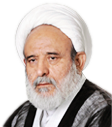A brief description of Arabia
шаблоны YooTheme
шаблоны Недвижимости joomla
Details
Published on Tuesday, 28 August 2012 05:23
Written by S. T. H. Khwarazmi
The name Arabia is applied to a land populated by Arabic-speaking people. At the time of the birth of the Prophet, the Arabic-speaking region was not so vast as it is to-day; on one side it was bounded by the Persian Gulf much as it is to-day, since at that time, too, the southern borders of the Persian Gulf were inhabited by Arabs In Iraq the boundary was almost along the Tigris and the Euphrates namely that side of the Tigris where Arabic is now the main language In the region between Iran and the Tigris the main language was not Arabic, but Kurdish, Persian and some local dialects with Arabic as the main language that side of River Tigris. In fact the Arabs now inhabiting Khuzestan are not the original inhabitants but migrated to this region after Islam. In the north were the present countries of Shaam or Syria and Jordan where a number of Arab migrant tribes lived in the time of Islam, the period of that migration will be explained later. In the north, too, Arabic was not, unlike to-day, the main language, though a considerable Arab migrants had settled in the valley of the Jordan River. It may be observed that at present the Arab land, have extended as far as Turkey, whereas at that time it was limited more to the south towards Jordan. The present Lebanon and Syria were not Arabic speaking. In Jordan, too, Arabic was not the main language, and only the Arab migrants spoke Arabic. In this respect Jordan resembled the present Khuzestan where a group speak Arabic and another speak Persian.
In the west, in a significant part of Africa where Arabic is now spoken, the main language at the time was not Arabic. Egypt, Sudan, Somalia, Libya, Algeria, Morocco, Tunisia and even Abyssinia and other parts where Arabic is now spoken, Arabic was not the main language at that time. Thus we see that at the time of the birth of Islam the region of Arabia and the Arab land from the viewpoint of the Arabic language was located in the south of the Persian Gulf and the Sea of Oman extending in the west up to the Red Sea - beyond which Arabic was not prevalent - and in the north till the Jordan River valley beyond which Arabic was not prevalent, and in the east to the Tigris and Euphrates rivers. This, then was the extent of Arabia at the time of the birth of Islam.
Here it should be pointed out that the language spoken in the regions beyond these frontiers, namely in a part of Africa, Shaam, Syria, Lebanon, Jordan and to the east of the Tigris and Euphrates in Iraq, had been branches of Semitic languages, having a common root with Arabic - in the same way that Persian has a common root with German, Indian Sanskrit and Indo-European languages. The local languages of Somalia, Abyssinia, Egypt and a part of Jordan (which was Hebrew) and those of the present Lebanon and Syria (which had been Phoenician), and those of other parts (which had been Chaldean, Assyrian etc.) were all like the Arabic language Semitic in origin and are recognised as Semitic languages and both from the viewpoint of script as well as vocabulary linked together.
Georgie Zeydan, in his book, 'History of Civilisation, 6 narrates that at that time if someone went from Arabia to Abyssinai, or from Jordan or the Lebanon to Hejaz, he did not feel like an alien, the languages were so much alike that he could understand the local language without the aid of an interpreter, and if he stayed there for a little while, he could learn the local language - the same way that a Persian-speaking person visiting Kurdestan can learn the local language within a short time. Thus the Arabic speaking region of to-day used to be the region of Semitic languages, which have common roots with Arabic, and is thus easily understood by their neighbours, while the Arabian peninsula was the home to Arabs who spoke pure unmixed Arabic.
____________
6. ".... Moreover, the language of the Arabs was similar to those of their neighbours, having the same Semitic root. And as it can be seen to-day, much as in that period, the Arabic, Chaldean, Assyrian, Hebrew, Abyssinian and Phoenician languages are similar, their relation resembling the relation between colloquial and the scholastic Arabic. At that time if an Arab travelled from Hejaz to Iraq or Abyssinia or Phoenicia he could follow the local language without an interpreter," History of Islamic Civilisation, Gergie Zeydan. Translated by Javaher Kalam, p. 9.
Adapted from the book: "Background of the Birth of Islam" by: "S. T. H. Khwarazmi"
source : tebyan













